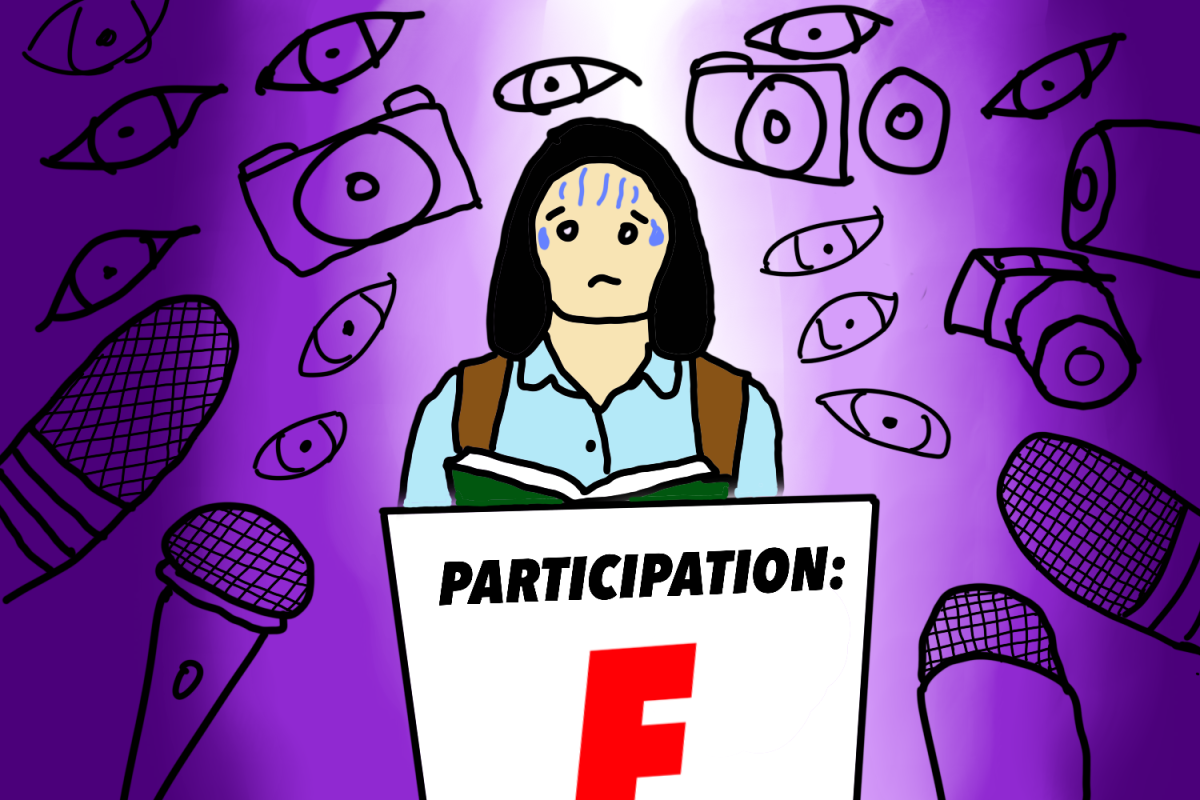In many classrooms, participation grades are intended to motivate students to speak up, engage, and be part of the discussion. But in practice, they often have the opposite effect. Quiet students—whether introspective, shy, or simply needing more time to process—can be unfairly penalized.
“I have a lot of social anxiety, and it feels difficult to make an input in front of people you’ve never talked to,” said sophomore Alexia Hernandez. “It’s especially uncomfortable knowing that they’re listening to you specifically, judging every word you say.”
Participation as a graded metric tends to reward extroversion, verbal quickness, and comfort speaking in front of peers, rather than actual understanding or effort. Perhaps it’s worth considering whether grading participation truly reflects learning, and exploring more inclusive approaches that acknowledge the different ways students engage in class, even here at Arcadia High School (AHS).
California’s English Language Arts standards require students in grades 9-12 to initiate and participate effectively in a range of collaborative discussions and to present information clearly, concisely, and logically with appropriate eye contact, volume and pronunciation. Given that the standards emphasize effective communication skills rather than mere frequency of speaking, a participation model that rewards quality contributions, even if less frequent, may better align with what students are expected to achieve.
In college seminars, especially in humanities or discussion-heavy courses, participation is often a significant portion of the grade. Professors expect thoughtful contributions during class discussions: asking questions, responding to peers, and sometimes even leading smaller discussions. But even at that level, while high school teachers also use rubrics, it is more common for faculty to utilize rubrics that try to clarify what “participation” means beyond surface-level engagement. It’s not just about speaking often, but about asking meaningful questions, listening actively, and drawing connections to the reading.
Still, college seminars also illustrate the challenges. Students who are less confident about speaking up—or are non-native English speakers—may hesitate to contribute during debates. Some professors allow small group discussions or written reflections to give people time to formulate their thoughts. Others offer advance notice of topics so students can prepare. These practices help, but often participation grading is still biased toward those who talk more.
Introverts or students with social anxiety often feel pressure, stress, or embarrassment trying to meet arbitrary vocal milestones. This can undermine actual learning; the focus shifts from absorbing content to simply having something to say.
Furthermore, the criteria for participation is often vague or unstated. Instructors may rely on memory over many weeks to judge who spoke when and how often, leading to subjectivity and bias.
Here are some alternative approaches that preserve the goal of encouraging engagement, without penalizing students for quietness or communication style:
- Rubrics with clear criteria: Professors and teachers should define what “good participation” means, beyond just speaking often. Criteria can include things like quality of contributions, listening, building on others’ ideas, references to reading, and asking thoughtful questions. Transparency helps students understand the expectations.
- Multiple modes of participation: Written reflections, discussion boards, small-group tasks, or online forums allow students to participate in ways that feel safer and more thoughtful. These alternatives give time for reflection and are especially helpful for quieter students. They also allow students to articulate their thoughts before a verbal discussion.
- Formative assessments: Regular low-stakes assignments, like short written responses, allow students to question something from the reading or react to a prompt. This can measure engagement without forcing classroom speech. These assessments also give feedback—teachers responding with comments that highlight strong insights, suggest areas of clarification, or encourage students to expand on their ideas. In this way, students not only demonstrate engagement, but also receive guidance that helps them grow their participation and communication skills over time.
- Small group or pair discussions: Breaking class into smaller sections where all students must contribute reduces the pressure of speaking in front of the entire class. It encourages peer interaction and provides a safer space for quieter students.
- Self-assessment and peer feedback: Having students reflect on their participation, or receive feedback from their peers, can provide insight into how they contribute. This also helps students who don’t speak often to understand that their contributions matter, even if it’s not always vocal.
Grading participation under the current model often punishes traits outside a student’s control: personality, anxiety, speaking ability, or how quickly someone thinks out loud. But learning is not best measured by who has the loudest voice in class.
Learning involves many things: listening, processing, reflecting, writing, asking questions, and yes, sometimes speaking out. Classrooms should value all of those. By implementing inclusive alternatives, educators can ensure that students are judged by what they know and how they learn, not just by how loudly or how often they speak.







